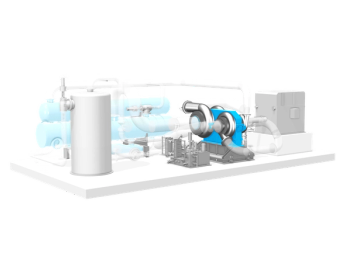
New regenerator for gas turbines
In 2001, David Gordon Wilson and MIT colleagues formed Wilson TurboPower Inc. to exploit a couple of patents that Wilson had assigned to MIT. They were for low-pressure-ratio highly regenerated engines that would give around 55% shaft efficiency for 300-KW sizes. WTPI demonstrated the regenerator (it operated at very high effectiveness, over 97%) and a ceramic axial-turbine blisk made by Saint Gobain to its design that could handle the specified 1500 K TIT. However, the regenerator leaked more than it should. The patents have expired, and WTPI as such no longer exists.
Ceramic honeycomb matrix
Dave Wilson, now associated with ICRtec and Brayton Energy of Hampton, NH, has a patent pending on a design with considerable improvements over the MIT regenerator. The leakage is greatly reduced through being controlled by rotary conical valves.
The regenerator matrix, still likely to be ceramic honeycomb, but could be lower-cost material such as packed spheres, is enclosed in casings in several chambers, perhaps two to twelve. The valves are incorporated in the two ancillary housings of each chamber, one being on the hot side and the other on the cold side.
More chambers for higher pressures
Manifolds duct the flows to each side of all chambers as shown in the drawing. Two chambers could be used for regenerators for atmospheric pressure, and a larger number for regenerators operating at higher pressure ratios, as when a regenerator is part of a gas-turbine engine.
For instance, six-to-twelve chambers could be used for cycle pressure ratios of three to five. At all times two-thirds of the chambers would be carrying the hot turbine exhaust and the other third would be heating the cool compressed air. Switching two chambers at a time would occur every minute or so.
Major advantages
Two major advantages are that larger turbines could have regenerators composed of identical smaller units that would have lower costs and much lower thermal stresses than single large units. And the individual matrix units could be easily and quickly swapped, even possibly under load, if there was evidence of increasing blockage or erosion. Another substantial advantage over rotary regenerators (either of the steady-flow or discontinuous-flow types) is that none of the matrix surfaces is taken by seals, which can cover large proportions of the matrix surfaces.
For more information contact Dave Wilson at
Kesseli at
Newsletter
Power your knowledge with the latest in turbine technology, engineering advances, and energy solutions—subscribe to Turbomachinery International today.





